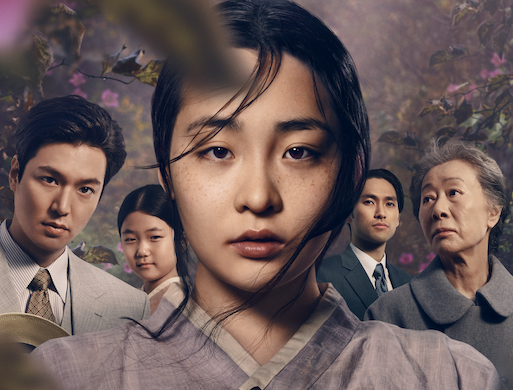Breathtaking Novel Takes Us Deep Into Hostility Between Korea, Japan
‘Pachinko’ is the first book that offers an inkling of the depth and context of the Korean-Japanese experience.

One should not confuse basic knowledge of the dates and facts and stats of the history of hostility between Korea and Japan with understanding of the mindset — the fears and hopes, the complexes — of Koreans under Japanese rule in the colonial period and in Korean communities in Japan to this day.
For real comprehension, a breathtaking novel, “Pachinko,” by Min Jin Lee, now streaming in a series on Apple TV, takes readers through four generations from the hardships of Japanese colonialism to the indignities of life as perpetual “foreigners” in Japan. Even tycoons who’ve grown rich off pachinko, the arcade game that’s a cross between pinball and the slot machines that soak the suckers in Las Vegas and Atlantic City, are not immune. They too are relegated to a niche in Japanese society.
Much as I thought I knew this story — I’ve hung out in Asia for nigh on 40 years, a lot of it with families in Korea and Japan — Ms. Lee’s novel was an entirely new experience. The descriptions of everyday lives, the daily suffering and disappointments, are almost unimaginable to those who haven’t lived it.
The novel opens in the years before World War II, aka the Pacific War. Life was tough. The Japanese occupiers looked down on the Koreans, bullying and excluding them from the system they had imposed on Korea not so much as a colony but as a tributary state. They also discriminated brutally against Koreans living in Japan.
While telling so much, “Pachinko” avoids getting preachy or didactic. The images come through in an intensely personal tale full of dialogue and twists and turns that sometimes seem more like jolts and bumps. The daily lives of Koreans struggling to survive in a culture and society rigged against them drive the plot.
“The ghetto where Koreans lived,” so the central character, a woman from a fishing village near Busan, discovered on arriving in Osaka, “looked vastly different from the nice houses she’d passed by on the trolley ride from the station.” Just as bad, the “animal stench was stronger than the smell of food cooking or even the odors of the outhouses.”
Life gets much worse when the Pacific War breaks out. After a worker at a Korean Christian church in Osaka refuses to bow to the emperor, he, the minister, and the assistant minister are jailed, beaten, and tortured to agonizingy slow deaths. “In times of war, there had to be crackdowns against troublemakers for the sake of national security,” Ms. Lee writes. “Koreans caused trouble, then made excuses.”
Ms. Lee, a Korean-American who was educated at Yale and Georgetown, comes as close as anyone to letting us know the unwritten barriers between Koreans and the Japanese among whom they exist. A grant from the New York Foundation for the Arts, she acknowledges, confirmed her “stubborn belief that the stories of Koreans in Japan should be told somehow when so much of their lives had been despised, denied, and erased.”
Much more research, and then a move to Tokyo and interviews with Koreans in Japan, was needed to put together a 537-page novel that was nearly 30 years in the making. Never, however, does Ms. Lee let the bitterness of Koreans get in the way of the plot. Rather, the characters evolve from scenes steeped in human emotion, not political ideology.
On the way, we get a sense of courage mingled with love and tragedy. Insurmountable obstacles would always be there. In a Japanese school, a brilliant boy learns how to cope. “The children were merciless.” Yet “he worked harder on his studies, and, to the surprise of his teachers, he was the first or second in academic rank in his second-grade class.”
The separation of Koreans from Japanese is a recurring theme. When the lovely young girlfriend of a brilliant young Korean learns his real father is a wealthy Korean gang boss who’s secretly paying to put him through a prestigious university, it is he, not she, who can’t stand the disclosure. “Please never come see me again,” he tells her.
“Is this the Korean temper that I’ve never seen before?” she asks.
“You and I. It cannot be,” he replies.
In modern Japan, it’s better to act and talk like a Japanese. An owner “suspected” the same man, whom he had just hired, “was a Korean, but he said nothing, because as long as no one else knew, it didn’t matter.” The indoctrination begins early. “Die, you ugly Koreans,” is scrawled in the graduation album of a boy who committed suicide.
Ah, but the suicide of a schoolboy is the least of the shocks. The book unravels a love story that is far more sorrowful, extending across generations from Korea to Japan. On the way, there are plots and subplots. “I am not yakuza,” a man tells his Japanese girlfriend. “But everyone thinks Koreans are gangsters.”
Worse, the super-smooth Japanese boss who’s so great to the polished Korean on his staff fires him on the spot when a deal turns sour. “In Japan, you’re either a rich Korean or a poor Korean,” he says, “and if you are a rich Korean, there’s a pachinko parlor in your background somewhere.”
The arrogance, condescension, and hypocrisy come through as clearly as Japanese assurances of cooperation with Koreans in diplomacy, in military exercises, in any kind of relationship. No one who reads this book need ask why South Koreans don’t want to form a military alliance against their common North Korean foe.
Nor will anyone wonder why the Koreans cling so tenaciously to Dokdo, out there in the waters between Korea and Japan, a near worthless pair of islets where no one lives except for an old couple to give the claim an appearance of legitimacy. And no one will wonder why the Japanese never give up their own counterclaim.
You have to read this book to get an inkling of the depth and context of the Korean-Japanese experience. Despite all the statement-making, negotiations, and histrionics under the watchful eyes of their American ally, Koreans and Japanese don’t quite get along. This absorbing saga gives some idea of why.

